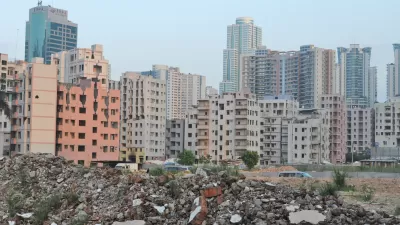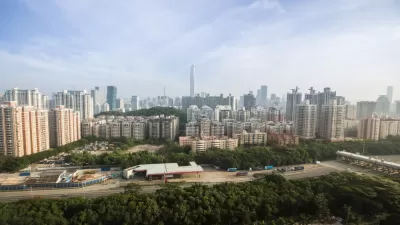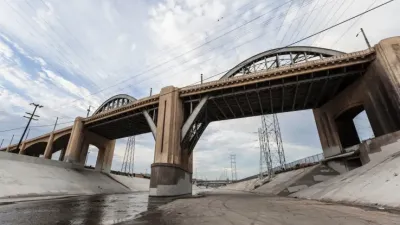A growing "sand scandal" in Shenzhen may just be the tip of the iceberg when it comes to the quality of concrete used in constructing China's skyscrapers. The construction of what was to have become the country's tallest building has been halted.

"A sand scandal is brewing in China, with concerns that low-quality concrete has been used in the construction of many of the country’s largest buildings — putting them at risk of collapse," reports Ian Steadman. "Inspections by state officials have found raw, unprocessed sea sand in at least 15 buildings under construction in Shenzhen, including a building which, when finished, was set to become China’s tallest.'
"The Ping’an Finance Center is planned to top out at 660m, making it not only China’s tallest building but the second-tallest building in the world after the Burj Dubai. 80m has been built so far, but construction has been halted in the wake of the revelation from Shenzhen’s Housing and Construction Bureau that substandard sea sand concrete had been used in its construction."
Untreated sea sand, which is far cheaper than river sand, and illegal to use, "is unsuitable for construction because it still contains chlorine and salt, which corrodes steel," explains Steadman. "It can take only a few decades for a building to become dangerously unsafe if untreated sea sand is used in its concrete — including the possibility of collapse."
FULL STORY: Poor-Quality Chinese Concrete Could Lead to Skyscraper Collapses

Study: Maui’s Plan to Convert Vacation Rentals to Long-Term Housing Could Cause Nearly $1 Billion Economic Loss
The plan would reduce visitor accommodation by 25,% resulting in 1,900 jobs lost.

North Texas Transit Leaders Tout Benefits of TOD for Growing Region
At a summit focused on transit-oriented development, policymakers discussed how North Texas’ expanded light rail system can serve as a tool for economic growth.

Why Should We Subsidize Public Transportation?
Many public transit agencies face financial stress due to rising costs, declining fare revenue, and declining subsidies. Transit advocates must provide a strong business case for increasing public transit funding.

How to Make US Trains Faster
Changes to boarding platforms and a switch to electric trains could improve U.S. passenger rail service without the added cost of high-speed rail.

Columbia’s Revitalized ‘Loop’ Is a Hub for Local Entrepreneurs
A focus on small businesses is helping a commercial corridor in Columbia, Missouri thrive.

Invasive Insect Threatens Minnesota’s Ash Forests
The Emerald Ash Borer is a rapidly spreading invasive pest threatening Minnesota’s ash trees, and homeowners are encouraged to plant diverse replacement species, avoid moving ash firewood, and monitor for signs of infestation.
Urban Design for Planners 1: Software Tools
This six-course series explores essential urban design concepts using open source software and equips planners with the tools they need to participate fully in the urban design process.
Planning for Universal Design
Learn the tools for implementing Universal Design in planning regulations.
City of Santa Clarita
Ascent Environmental
Institute for Housing and Urban Development Studies (IHS)
City of Grandview
Harvard GSD Executive Education
Toledo-Lucas County Plan Commissions
Salt Lake City
NYU Wagner Graduate School of Public Service





























